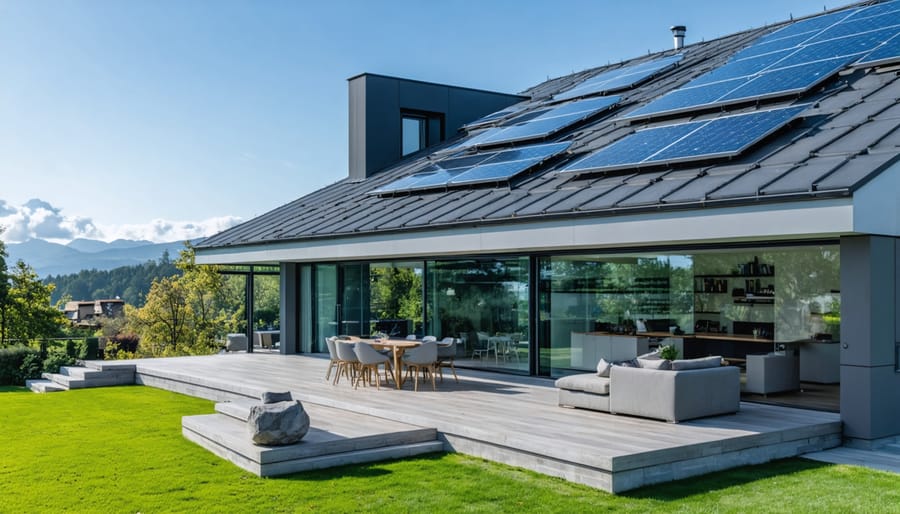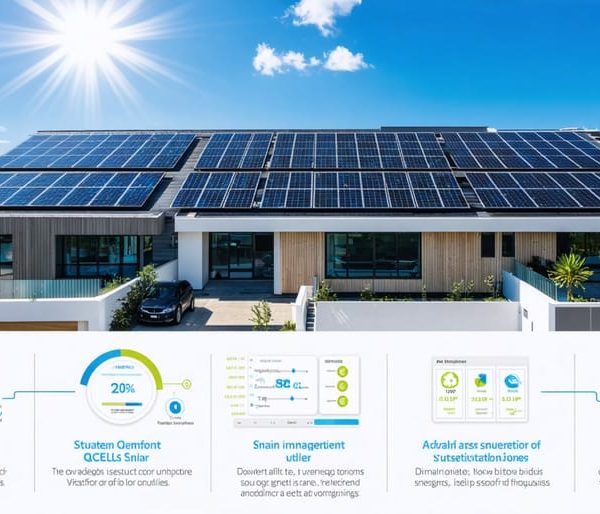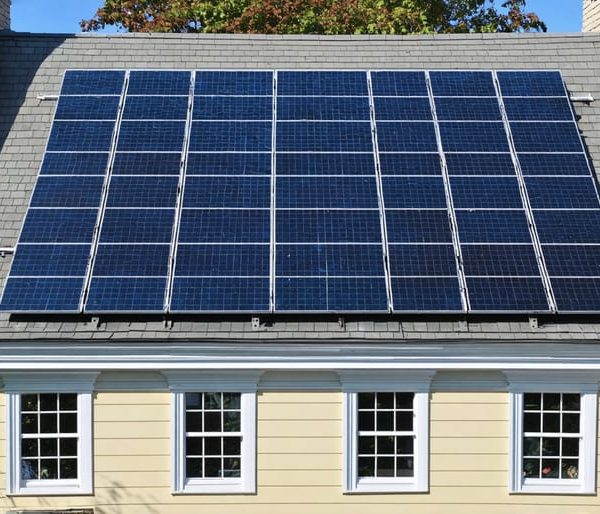Solar Tech Breakthroughs Are Revolutionizing Home Design
Solar technology has evolved more in the past five years than in the previous two decades combined, transforming from a niche solution into a mainstream power source that’s reshaping our energy landscape. Today’s solar panels convert sunlight to electricity with up to 23% efficiency – nearly double what was possible in 2010 – while costing 70% less than they did just a decade ago. This remarkable progress isn’t just about better performance; it’s about making clean energy accessible to everyone.
From sleek solar roof tiles that blend seamlessly with traditional architecture to flexible panels that can be integrated into curved surfaces, innovations are making solar technology more versatile and practical than ever before. Breakthrough developments in energy storage solutions and smart grid integration are solving the intermittency challenges that once limited solar’s potential. For homeowners and businesses alike, these advancements mean more reliable power generation, lower electricity bills, and a smaller carbon footprint.
Recent Advances in Solar Panel Efficiency
Higher Energy Conversion Rates
One of the most exciting developments in solar technology is the dramatic improvement in energy conversion rates. Today’s solar panels are far more efficient at turning sunlight into electricity than their predecessors. While early solar cells from the 1950s converted only about 6% of sunlight into usable energy, modern panels regularly achieve efficiency rates of 15-20%, with some premium models reaching up to 23%.
This leap forward comes from innovations in photovoltaic materials and cell design. Scientists have developed new silicon-based cells with multiple layers that capture different wavelengths of light, maximizing energy harvesting. Perovskite solar cells, a breakthrough technology, show promise of pushing efficiency rates even higher while potentially lowering production costs.
These improvements mean that homeowners can generate more power with fewer panels, making solar installations more practical for properties with limited roof space. For example, a modern 400-watt panel can now produce the same amount of electricity as two 200-watt panels from just a decade ago, while taking up half the space. This increased efficiency, combined with better manufacturing processes, has helped make solar energy more accessible and cost-effective for everyday consumers.
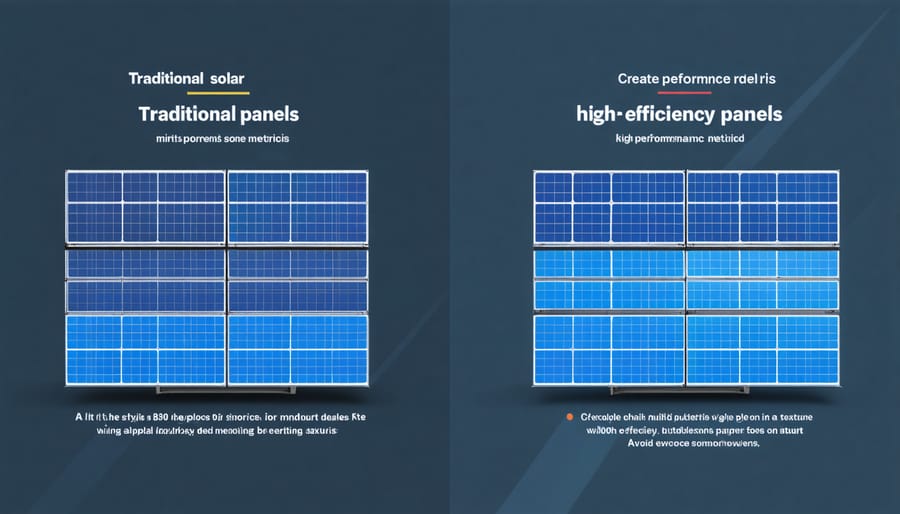
Smart Solar Technology Integration
The integration of smart technology has revolutionized modern solar power systems, making them more efficient and user-friendly than ever before. Artificial Intelligence and Internet of Things (IoT) sensors now work together to optimize energy production and consumption in real-time. Smart inverters automatically adjust to weather conditions, while mobile apps give homeowners instant access to their system’s performance data.
These intelligent systems can predict maintenance needs before problems arise, reducing downtime and repair costs. They also integrate seamlessly with home automation systems, allowing you to automatically run energy-intensive appliances during peak solar production hours. For example, your washing machine can start when your panels are generating the most power, maximizing your energy savings.
Weather forecasting algorithms help these smart systems prepare for upcoming conditions, storing extra energy when clouds are expected or adjusting panel angles to capture maximum sunlight. This innovative integration of technology means your solar installation isn’t just collecting energy – it’s actively working to maximize your investment and reduce your carbon footprint.
Innovative Building-Integrated Solar Solutions
Solar Roof Tiles and Windows
Gone are the days when solar panels meant bulky installations that compromise your home’s aesthetics. Modern solar home design strategies now include sleek, integrated solutions that blend seamlessly with your property’s architecture.
Solar roof tiles, also known as solar shingles, are revolutionizing how we think about residential solar power. These innovative products look virtually identical to traditional roofing materials while generating clean energy. Available in various styles and colors, they offer homeowners the perfect balance between functionality and curb appeal.
Similarly, solar windows are transforming glass surfaces into power generators. These transparent or semi-transparent panels can be installed in place of regular windows, maintaining natural light while producing electricity. Some advanced models even adjust their tint automatically to optimize energy production and indoor comfort.
Installation is becoming increasingly straightforward, with many manufacturers offering snap-together systems that qualified contractors can install quickly. The durability of these products has also improved significantly, with most solar tiles and windows now carrying warranties comparable to traditional building materials.
While the upfront costs remain higher than conventional solar panels, the aesthetic advantage and dual functionality make them an attractive option for homeowners who want to embrace renewable energy without compromising their property’s appearance. As production scales up and technology advances, prices continue to decrease, making these elegant solutions more accessible to the average homeowner.
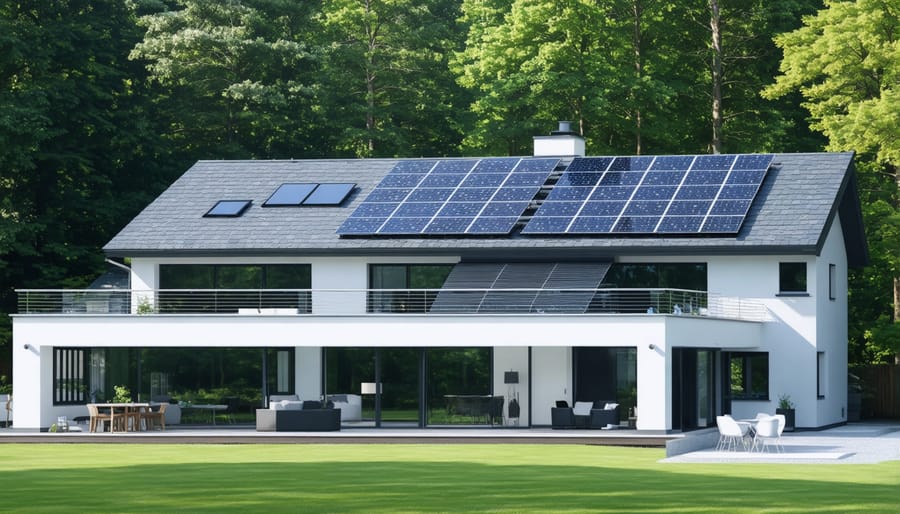
Transparent Solar Panels
One of the most exciting breakthroughs in solar technology is the development of transparent solar panels, which are transforming how we think about solar energy integration in buildings. These innovative panels look like regular glass while capturing sunlight to generate electricity, opening up countless possibilities for solar adoption in urban environments.
Imagine windows that not only let natural light into your home or office but also generate clean energy. These see-through panels use specialized organic molecules that absorb invisible ultraviolet and infrared light while allowing visible light to pass through. This means they can be seamlessly integrated into windows, skylights, and glass facades without compromising the building’s aesthetics or natural lighting.
Commercial buildings, which typically have extensive glass surfaces, stand to benefit tremendously from this technology. A standard office building could potentially generate a significant portion of its energy needs through its windows alone. Some early adopters have reported energy savings of up to 30% after installing transparent solar panels in their buildings.
While currently less efficient than traditional solar panels, transparent solar technology is rapidly improving. Recent developments have pushed efficiency rates from 1% to over 10%, and researchers predict further improvements in the coming years. This technology represents a crucial step toward turning our cities into giant solar power plants, all while maintaining their modern, glass-dominated architecture.
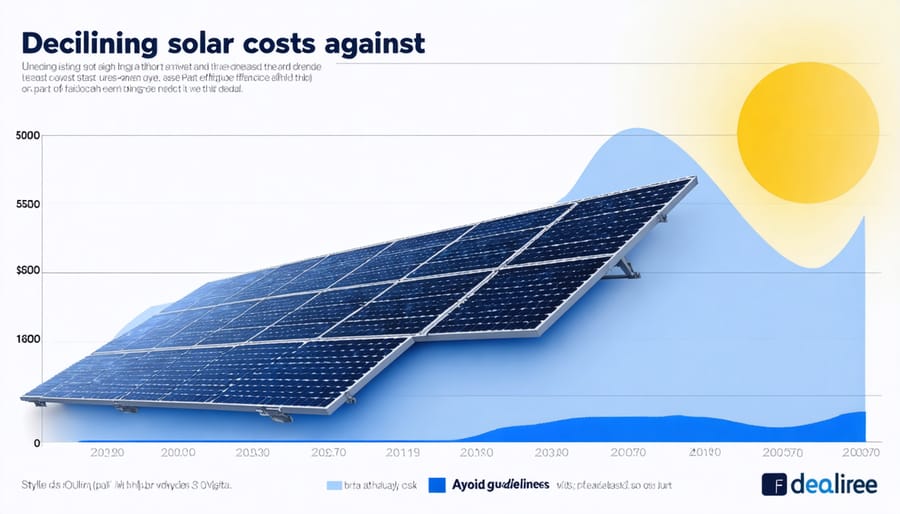
Cost-Effectiveness and ROI Improvements
Manufacturing Efficiency Gains
Manufacturing solar panels has become significantly more efficient and cost-effective over the past decade, leading to lower prices for consumers. Production facilities now use automated assembly lines and advanced robotics, reducing labor costs and minimizing human error. These streamlined processes have cut manufacturing time by up to 50% compared to methods used just five years ago.
Innovation in silicon wafer production has been particularly impressive, with manufacturers now able to create thinner, more durable panels using less raw material. Better recycling systems have also emerged, allowing companies to recover and reuse valuable materials from the manufacturing process, further reducing costs and environmental impact.
Quality control has improved dramatically through AI-powered inspection systems that can detect microscopic defects instantly. This advancement ensures higher-quality panels while reducing waste and production costs. Additionally, manufacturers have developed more energy-efficient kilns and coating processes, cutting the energy needed to produce each panel by approximately 30%.
These manufacturing improvements have helped drive down the cost of solar panels by more than 70% since 2010, making solar energy more accessible to homeowners and businesses alike.
Enhanced Durability and Lifespan
Modern solar panels are built to last longer and perform better than ever before. Today’s panels routinely come with 25-30 year warranties, but many continue performing well beyond these periods. The latest manufacturing techniques and materials have significantly reduced panel degradation rates to just 0.3% per year, compared to 1% in earlier generations.
The durability improvements extend beyond just the panels themselves. Mounting hardware is now crafted from weather-resistant materials like anodized aluminum and stainless steel, virtually eliminating rust and corrosion concerns. Advanced protective coatings guard against environmental damage, while stronger tempered glass helps panels withstand severe weather conditions.
Maintenance requirements have also decreased dramatically. Self-cleaning coatings help panels shed dirt and debris naturally, while improved seal technology keeps moisture out of critical components. Even inverters, traditionally the most maintenance-intensive part of solar systems, now feature more reliable designs with expected lifespans of 15-20 years.
These improvements mean lower long-term costs for owners and more consistent energy production throughout the system’s life.
Future Developments on the Horizon
The solar technology landscape is on the brink of exciting breakthroughs that promise to revolutionize how we integrate solar power into our buildings. Perovskite solar cells, which can be printed like newspapers, are showing incredible potential with efficiency rates approaching traditional silicon panels. These cells could transform windows into power generators while maintaining transparency – imagine office buildings that power themselves through their glass facades.
Building-integrated photovoltaics (BIPV) are evolving beyond simple roof tiles. New solar materials are being developed that can be incorporated into building materials like concrete, paint, and even decorative elements. This means future buildings won’t just have solar panels – they’ll be solar-powered from the ground up.
Bifacial solar panels, which can capture light from both sides, are becoming more sophisticated. When combined with advanced tracking systems, these panels can increase energy production by up to 30% compared to traditional panels. This development is particularly exciting for commercial buildings with limited roof space.
Scientists are also working on organic solar cells that can be produced as flexible, lightweight sheets. These could be applied to curved surfaces or integrated into fabric-based structures like tensile roofs and awnings. The possibilities for architectural design are expanding dramatically.
Storage solutions are keeping pace too. New battery technologies and smart energy management systems are making it easier to store and use solar power efficiently. This means buildings can become truly self-sufficient, operating on clean energy around the clock.
These innovations aren’t just improving efficiency – they’re reshaping our vision of sustainable architecture. As these technologies mature, we’re moving closer to a future where solar power is seamlessly integrated into every aspect of building design.
Solar technology has made remarkable strides in recent years, transforming from an ambitious alternative energy source into a practical, efficient, and increasingly affordable solution. From enhanced photovoltaic efficiency to smarter energy storage systems, these improvements have made solar power more accessible than ever. The integration of AI-driven monitoring systems and advanced materials has addressed many traditional challenges, while falling installation costs have made solar a compelling investment for both homeowners and businesses.
As we look to a more sustainable future, the continuous evolution of solar technology offers hope and practical solutions for clean energy adoption. Whether you’re considering solar panels for your home or planning a commercial installation, there’s never been a better time to harness the power of the sun. The technology continues to advance, promising even greater efficiency and affordability in the years to come. By embracing solar power today, you’re not just investing in current technology – you’re supporting and benefiting from a rapidly evolving industry that’s shaping our energy future.

